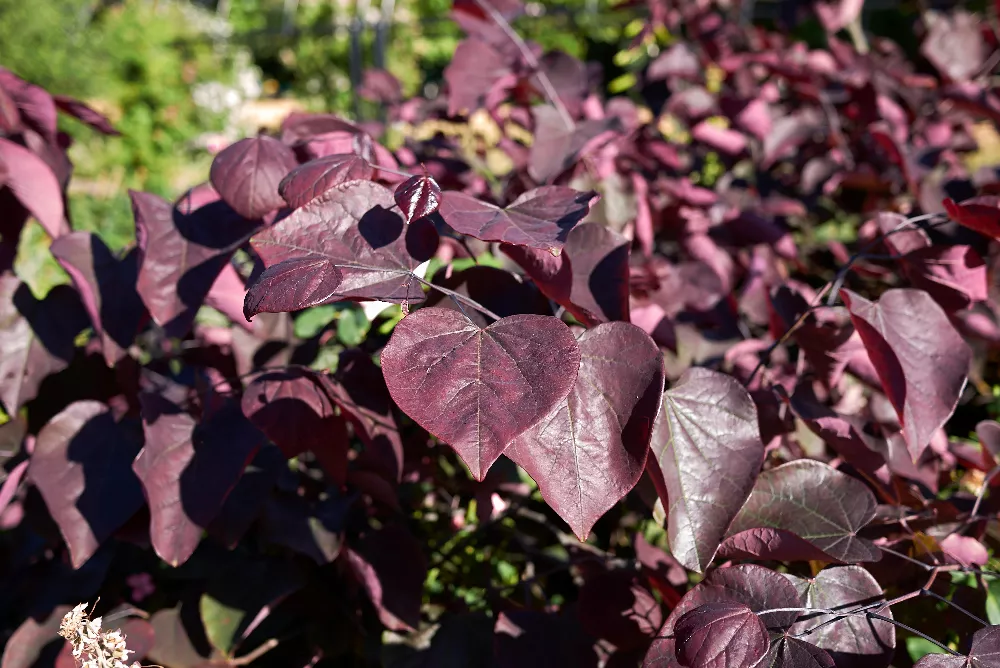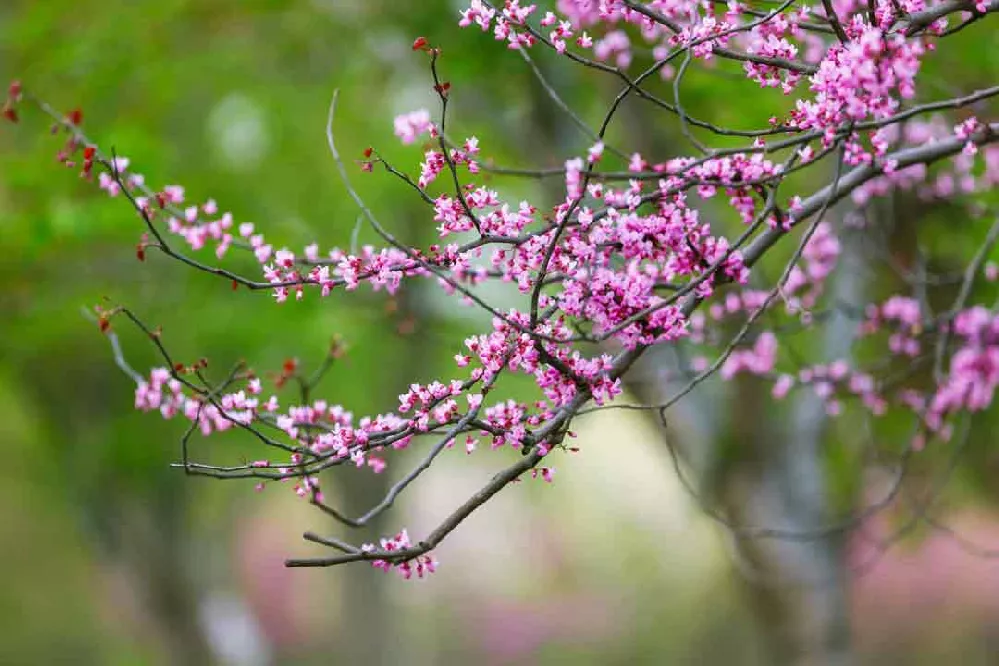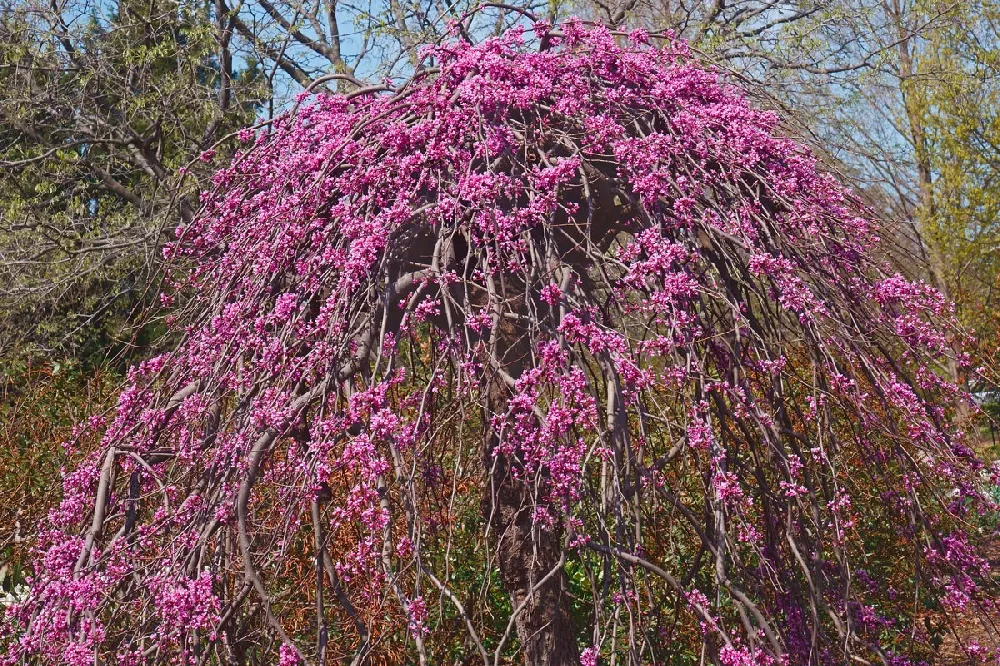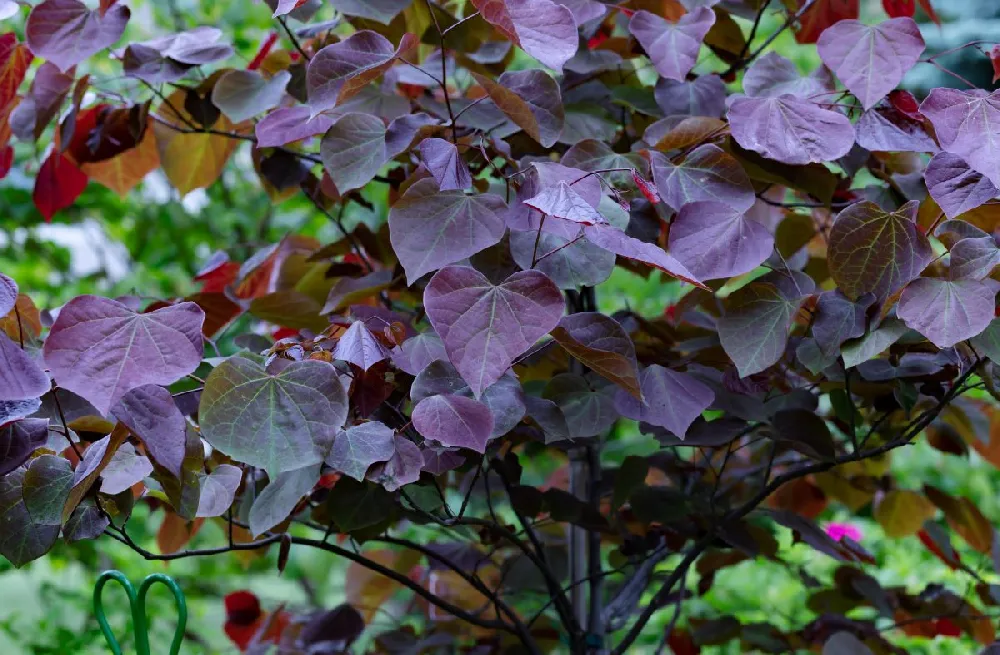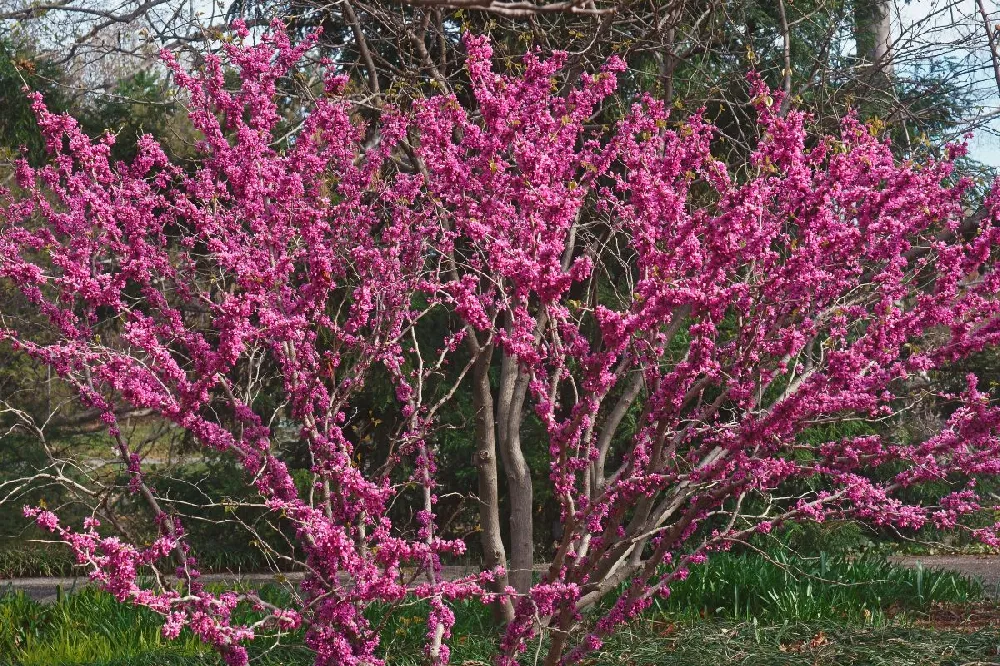- Home >
- Redbud Trees >
- Forest Pansy Redbuds
Forest Pansy Redbuds for Sale
- Ships in 1-2 days
- 1-Year Warranty Eligible
- Pots or accessories are not included unless specified in the product options.
Shipping Details:
Once your order is shipped, you’ll receive an email with a tracking number and estimated delivery date. Most orders ship immediately, but some items are seasonal and may only ship in spring or fall. These products are noted on the website.
‘Forest Pansy’ is a cultivated variety of Cercis canadensis, or the eastern redbud tree, a type of small, deciduous tree native to North America. The redbud gets its name from the red buds that appear along its branches and trunk and bloom into pink flowers in the early spring. Other characteristics of ‘Forest Pansy’ include:
- Variable size, ranging from 20 to 30 feet high
- Spectacular show of pink, pea-sized flowers in early spring
- Adaptable to a variety of soils
Plant Care
Sunlight

Will grow well in sunny areas or partial shade.
Watering
Keep soil consistently moist but not wet. Becomes drought-tolerant at maturity.
Fertilizing

For the best performance, use an organic form of fertilizer such as compost. Any nitrogen or phosphorus-based formula will suffice as well.
Planting and Care
Planting instructions
Redbud trees grow best in USDA hardiness zones 6-8. They love sunshine, but are sensitive to heat. If you are planting in a warmer climate, choose a location where the plant will receive partial shade, particularly in the afternoon. These plants adapt well to a variety of soils, such as sandy or loamy soil, as long as they are well-draining. ‘Forest Pansy’ can grow to be 30 feet high, with a spread of up to 25 feet. Select a planting location with enough room to grow, as these plants don’t like to be disturbed once they settle.
Watering and nutrients
‘Forest Pansy’ grows best in soil that is regularly watered in an even, consistent amount. However, it does not tolerate wet or boggy soils well, so be sure to plant your tree in well-draining soil to prevent root rot. The young ‘Forest Pansy’ need lots of water, but as the plants age they need less, and can even withstand short periods of drought. Do not fertilize your tree when first planted — you’ll want to wait until the roots have established. Once established, you can fertilize your ‘Forest Pansy’ three to four times from mid-spring to mid-summer with a fertilizer high in phosphorus.
Pruning
‘Forest Pansy’ grows asymmetrically. Because its interesting shape is part of its appeal, this plant doesn’t need much pruning. If you want to shape your forest pansy, it’s best to do so when the tree is young. Otherwise, you will only need to prune the plant every three to five years to maintain its general shape. Remove crowded branches, suckers, and water sprouts more frequently. The best time to prune ‘Forest Pansy’ is in the winter when the tree is dormant.
Pests, diseases, and animals
Although ‘Forest Pansy’ is resistant to damage from deer, it is susceptible to damage from rabbits and mice, who like to eat the tree’s bark. To prevent this, wrap the bottom two to three feet of the trunk in hardware cloth. ‘Forest Pansy’ is also susceptible to pests, including caterpillars and scale insects, which can damage the tree’s leaves. You can treat a scale insect infestation with horticultural spray, while pruning affected leaves and branches will get rid of a caterpillar infestation. Healthy trees should easily recover from these types of infestations.
Soil
This plant can adapt well to a variety of soil types, including clay, sandy, or loamy soil. However, it performs best in rich and fertile soil. As long as the soil drains well, then the Forest Pansy should grow perfectly well.
It does not respond well to being disturbed, so when you initially plant your Forest Pansy make sure you choose a location that will be permanent. Trying to move your plant once it has settled may cause it to decline.
These plants can reach heights of up to 30 feet with a spread of up to 25 feet, so choose a spot which is a suitable size, and gets adequate light (Royal Horticultural Society).
Light
Forest Pansy trees can grow in full sun or partial shade. The ideal lighting for your plant will depend on your climate. If you live in the South where summers tend to be hotter, then a partially shaded position will work best for this tree.
When the Forest Pansy is in partial shade, you should ideally situate it so that it gets morning sun and afternoon shade, therefore giving it some respite from the heat during the hottest part of the day. If your summers are milder, then a position of full sun would work best for this tree. The more light it receives, the more profusely it will bloom.
Temperature
This plant is hardy through USDA hardiness zones 6-8. It is native to central and eastern North America, so it grows especially well in these regions.
Though the Forest Pansy loves sun, it is sensitive to heat, so if grown in a warmer climate, it should be protected from the heat by ensuring it gets shaded in the afternoon. This is the best way to regulate the temperature of the plant and help it to survive in climates where it may otherwise struggle.
In order for flowers to set properly, the plant needs to undergo a winter chill. Therefore, it is not advisable to grow it in climates where winters are mild.
Propagation
Forest Pansy plants can be propagated by seed or cuttings. To grow from seed, plant it in moist and well-draining soil in the fall. It should develop roots over winter and start its rapid growth the following spring. Alternatively, you can take cuttings from a mature plant to propagate during spring or summer.
For successful propagation, you will need semi-hardwood cuttings. These are stems from the plant which are not the fresh new growth, but also not the old brittle growth. You can identify semi-hardwood stems from their pliability. New growth will be very bendy under pressure, whereas old growth will simply snap. Semi-hardwood growth will be somewhere between the two, offering some resistance against bending but not snapping easily.
You can use these cuttings to propagate indoors or outdoors, choosing to plant them in potting soil in a container or directly in ground soil. You will need to maintain moist soil while the cuttings take root, while also being careful not to overwater. You will know the cutting has rooted when new leaves develop.
Above soil, growth is always an indication that below soil growth is also happening. You can also test whether roots have developed by gently tugging on the cutting. If it easily slides out of the soil, then it has not rooted, whereas if some resistance is felt, then this is because roots are holding onto the soil.
A few weeks after roots have developed, a cutting kept in a container will need to be potted on into a larger container, or planted outside. Pick a location where the plant will be able to grow to its full size because Forest Pansy’s resent being transplanted and can go into decline. For this reason, you should avoid planting any cuttings in a spot which they may outgrow in the future.
Flowers
The flowers of this tree are small and pink, with a pea-like appearance. They bloom in spring before the leaves have unfurled, covering the bare branches of the tree with a mass of pretty blossoms. The visual effect is very striking, though it is short-lived. The blooms last just a few weeks before they develop into long flat seed pods.
The leaves of the plant emerge a few weeks after the arrival of the flowers, in a shimmering purple-red. Foliage is broad and heart-shaped, with a glossy finish. The large leaves evolve to shades of yellow, orange, and burgundy in the fall before dropping off the tree in winter (Gardeners’ World).
FAQs
How large does ‘Forest Pansy’ grow?
Given the proper room and growing conditions, the ‘Forest Pansy’ redbud cultivar can grow 20 to 30 feet high, with a spread of about 25 feet. The tree’s branches grow in an asymmetrical, vase-shaped pattern, with a flat top and wide, U-shaped crotches. You can trim the forest pansy to accommodate a smaller growing area, if necessary. These are moderately fast-growing plants, averaging three to five feet of growth per year.
Are there other varieties of redbud plants?
Yes, there are many varieties of redbud trees. They include the Western redbud, which grows to a maximum height of 15 feet, and has green-blue leaves; the Tennessee pink redbud, a dwarf variety that grows to a maximum height of 12 feet; the Eastern redbud, a hardier variety more suited to colder climates; and the Judas tree, or Mediterranean redbud, which has red spring foliage that transitions to dark green in the summer.
Where is the best place to plant a ‘Forest Pansy’ redbud?
In general, ‘Forest Pansy’ redbuds grow best in Eastern and Central North America. They do not tolerate intense heat well, and need a winter chill for their flowers to set properly. Within your garden, choose a location that has well-draining soil, and receives full sun or partial shade. Because these plants can have a spread of up to 25 feet, space them away from structures and other trees accordingly.
Compare Similar Products
Customer Reviews
 Forest Pansy Redbud
Forest Pansy RedbudTree arrived within the stated timeframe. It was also wrapped nicely with planting instructions. Although it was quite smaller than expected (never ordered a tree online before, so not quite sure what I did expect), it appeared very healthy. So far, so good with the amount of rain we've been getting.
 Beautiful tree - ordered the 5- 6 ft. selection
Beautiful tree - ordered the 5- 6 ft. selectionThis tree arrived in great condition! 2 leaves dropped off in the box when we opened it. This particular order had a plastic bag around the bottom of the tree and not the burlap. We proceeded to immediately water it and placed in on our front porch as we weren't going to plant it for 2 days. We followed the enclosed instructions which were right on target for not planting immediately and for planting. The tree had the advantage of rain for 4 straight days on and off. Can't wait for fall and then spring.

